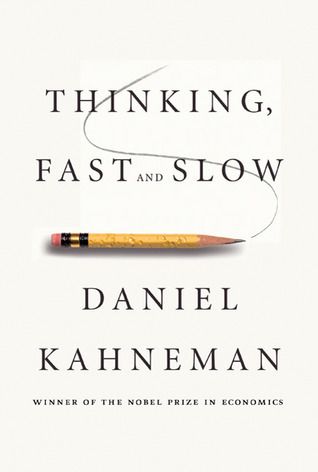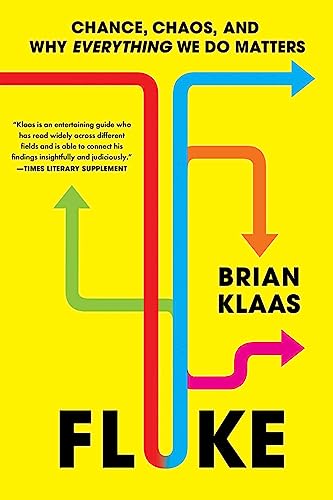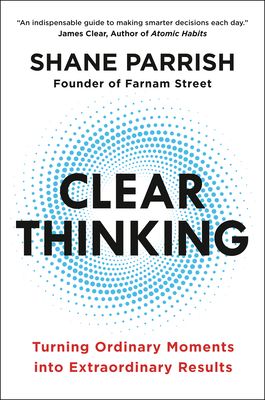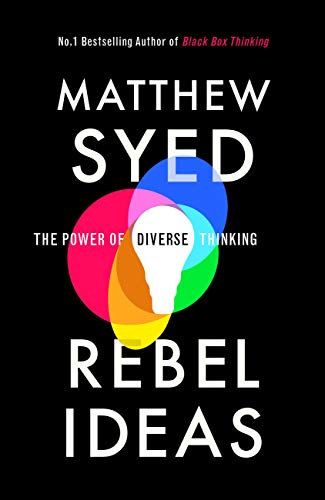Mental effort, much like physical exertion, comes at a cost. We tend to follow the 'law of least effort,' gravitating toward the least demanding course of action to achieve our goals. Activities that require us to hold multiple ideas in mind, follow rules, compare objects, or make deliberate choices are more effortful and require the engagement of System 2.
System 2 has a limited capacity for effortful activities. When overloaded, it prioritizes the most important activity, allocating 'spare capacity' to other tasks on a second-by-second basis. This is why we may miss seemingly obvious events when focused on a demanding task, like the gorilla walking across the basketball court in the famous experiment.
Section: 1, Chapter: 2
The economist Frank Knight distinguished between two types of unknowns:
- Risk refers to situations where the range of possible outcomes is known, and their probabilities can be estimated (e.g., rolling a six-sided die).
- Uncertainty (or "Knightian uncertainty") refers to situations where the possible outcomes and their likelihoods are both unknown and unknowable (e.g., the impact of a fundamentally new technology).
In an increasingly complex, rapidly changing world, more of our key challenges fall into the domain of uncertainty rather than risk. Treating uncertain situations as if they were merely risky - attempting to estimate probabilities and outcomes based on past data - can lead to dangerous miscalculations and fragility. Recognizing the limits of probabilistic reasoning in the face of radical uncertainty is essential for navigating the modern age.
Section: 1, Chapter: 6
Laplace proposed a thought experiment involving an omniscient being (Laplace's demon) that could know the precise details of every atom in the universe. With such perfect information, Laplace argued, this being could predict the future with absolute certainty.
However, chaos theory, as discovered by Edward Norton Lorenz, shows that even in deterministic systems, microscopic differences in initial conditions can lead to vastly different outcomes over time. This means that even if Laplace's demon existed, the tiniest measurement error would cause its predictions to become wildly inaccurate. Perfect prediction is therefore impossible, highlighting the fundamental uncertainty and unpredictability of our world.
Section: 1, Chapter: 1
Our perceptions of reality have been shaped by evolution to be useful for our survival, not to accurately reflect the truth. The Fitness Beats Truth theorem, developed by evolutionary biologists and cognitive scientists, shows that natural selection will always favor perceptual strategies that enhance reproductive fitness over those that provide a more truthful representation of the world.
Just as a computer's desktop interface is a useful but inaccurate depiction of the machine's actual workings, our brains present us with a simplified, sometimes illusory model of reality that nonetheless enables us to effectively navigate our environment. Recognizing that our perceptions are inherently biased and limited is crucial for understanding how we make sense of the world.
Section: 1, Chapter: 4
When evaluating possible solutions, it's critical to consider not just the immediate consequences, but the downstream impact of each choice. The author calls this second-order thinking, continuously asking "And then what?"
Explicitly mapping out these second and third-order effects yields a more complete picture of the outcomes of each option. First-order thinking is easy but shortsighted. Asking "And then what?" ensures you aren't winning a battle but losing the war.
Section: 4, Chapter: 2
The emotion default is when we allow our feelings, rather than facts and reason, to drive our actions. Anger, fear, embarrassment and other intense emotions can completely derail clear thinking in an instant, causing us to do and say things we later regret.
The author gives the example of Olympic shooter Matthew Emmons, who was poised to win his second gold medal until his nerves got the best of him. Worrying about calming himself, he forgot a crucial step in his routine and ended up firing at the wrong target, losing the gold. Emotions can multiply our progress by zero if we let them take control.
Section: 1, Chapter: 2
After making an important decision, it's tempting to judge the quality of your choice solely based on the results. Parrish argues this is a mistake. Outcomes are influenced by a multitude of factors, many outside your control. Judging solely on results without examining the process that led to the decision leaves you vulnerable to being fooled by randomness.
A good process raises the odds of success over time, even if it sometimes results in a subpar outcome. Focusing on the quality of your thinking rather than the variance in results builds decision making muscle in the long run.
Section: 4, Chapter: 6
The ego default is the tendency to protect and promote our self-image even when it leads us astray. We care more about feeling right and defending our ego than getting the best possible results.
General Benedict Arnold is a prime example. Passed over for promotions and feeling unappreciated, Arnold's bruised ego led him to betray his country - not because it was the wisest course of action, but to prove his importance and get revenge on those he felt slighted him. When the ego takes over, we lose sight of our goals and values.
Section: 1, Chapter: 3
While we can't eliminate our biological defaults, we can "reprogram" them to work for us rather than against us. Some key ways to do this:
- View your patterns of thoughts, feelings and actions as algorithms. Identify which ones are helping you progress vs holding you back.
- Surround yourself with people whose "algorithms" represent your desired behaviors and thinking patterns. We unconsciously adopt the habits of those around us.
- Design your environment to make your desired actions the path of least resistance. Willpower is ineffective, but engineered defaults help us make better choices automatically.
By training beneficial default algorithms, inertia starts working in your favor, propelling you towards what you want consistently over time. Creating structure is how you slowly reprogram yourself.
Section: 1, Chapter: 6
The social default stems from our biological drive to belong to the group and not risk being ostracized. While conforming had survival value in prehistoric times, it often leads to poor judgment today.
To combat this tendency, recognize that:
- It's easy to overestimate your willingness to go against the grain. Standing apart from the crowd is uncomfortable.
- Social rewards are felt immediately, while benefits of diverging are delayed. Steel yourself to weather short-term social friction.
- You can respect someone's opinion without agreeing with them. Have the courage to thoughtfully dissent.
Remember, if you do what everyone else does, you'll get the same results as everyone else. Thinking for yourself is key to extraordinary outcomes.
Section: 1, Chapter: 4
"Most people go through life assuming that they're right... We mistake how we want the world to be with how it actually is."
Parrish points out that we tend to assume our perspective is correct and have difficulty recognizing when our views are distorted by what we wish were true rather than objective reality. This prevents us from updating our beliefs and mental models even when faced with contradictory evidence.
Section: 1, Chapter: 1
The author identifies four main biological "defaults" that work against clear, rational thought:
- The Emotion Default: Reacting based on feelings rather than facts and logic
- The Ego Default: Seeking to protect and promote our self-image at all costs
- The Social Default: Conforming to group norms and fearing being an outsider
- The Inertia Default: Resisting change and clinging to familiar ideas and habits
Recognizing these defaults is the first step to overcoming them and creating space for reason.
Section: 1, Chapter: 1
The first step in effective decision making is to ensure you are solving the right problem. Too often, we jump straight into identifying solutions without fully understanding the issue at hand.
The author recommends applying two key principles at this stage:
- The Definition Principle - As the decision maker, take responsibility for defining the problem yourself. Don't just accept someone else's framing. Do the work to understand the situation firsthand.
- The Root Cause Principle - Don't just address surface-level symptoms; dig deeper to identify the underlying cause of the problem. Solutions that don't tackle the real source of the issue are doomed to fail.
Section: 4, Chapter: 1
Our biological instincts, while useful for survival in prehistoric times, often lead us astray in the modern world and prevent us from thinking clearly. These hardwired tendencies include defending our territory and ego, maintaining social hierarchies, and putting self-preservation above all else. While these instincts served our ancestors well, they frequently cause us to react emotionally rather than reasoning objectively.
Section: 1, Chapter: 1
One of the biggest pitfalls after committing to a decision is falling victim to the sunk cost fallacy - continuing to invest in a losing course of action because you've already poured resources into it.
To guard against this, the author recommends setting clear tripwires in advance - predetermined thresholds that trigger a change of course. Some examples:
- We will shut down this project if we don't hit X metric by Y date.
- I will sell this stock if it drops below $Z per share.
The key is establishing these criteria when you have a clear head, not in the heat of the moment. Tripwires help override our natural aversion to admitting failure and cutting our losses.
Section: 4, Chapter: 5
To avoid falling into an echo chamber of your own views:
- Follow people you disagree with on social media
- Read news sources from diverse political perspectives
- Join clubs and activities not related to your usual identity groups
- Cultivate friends from different walks of life
- Practice the "ideological Turing test" of steelmanning views you dispute
Echo chambers atrophy our ability to understand different views. Inoculate yourself through deliberate exposure to diverse intellectual fare.
Section: 1, Chapter: 5
To tap into the power of collective intelligence in your own life:
- Assemble diverse knowledge sources, from books to personal contacts
- Expose yourself to disciplines and frameworks outside your usual domain
- Engage people with different backgrounds to expand your perspective
- Bridge between disparate ideas to generate novel combinations
- Participate in knowledge-sharing communities to access distributed insights
Harnessing cognitive diversity is the key to personal and collective adaptability in a fast-changing world.
Section: 1, Chapter: 7
Homogenous groups, even when composed of smart individuals, often become collectively blind. They tend to share the same assumptions and blindspots. Homophily, the tendency of like to associate with like, acts as an invisible force pulling groups towards conformity of thought. Diverse groups that contain different perspectives are less likely to fall prey to collective blindness.
Section: 1, Chapter: 1
In the years before 9/11, the CIA suffered from a lack of diversity that left them unable to detect warning signs about the impending terrorist attack. The agency was overwhelmingly staffed by white, male, Protestant Americans who struggled to understand the significance of intelligence about Osama bin Laden and Al-Qaeda. As an insider noted, "the CIA couldn't perceive the danger. There was a black hole in their perspective."
Section: 1, Chapter: 1
To counteract our tendency towards homophily and reap the benefits of diversity, we must actively seek out people with different backgrounds and perspectives from our own. When assembling a team or group to tackle a problem, consider the range of cognitive diversity, not just expertise. Intentionally engage with those who see things differently, even if it feels uncomfortable at first. Over time, it will expand your own thinking.
Section: 1, Chapter: 1
"When we are immersed in a topic, we are surrounded by its baroque intricacies. It is very easy to stay there, or to simply think about making superficial alterations to its interior. We become prisoners of our paradigms. Stepping outside the walls, however, permits a new vantage point. We don't have new information, we have a new perspective."
Section: 1, Chapter: 4
Novel innovations increasingly come from recombining existing ideas in new ways, not from incremental improvements within a domain. Just as sexual recombination accelerates biological evolution, idea recombination accelerates technological and economic progress. Knowledge builds cumulatively as ideas have "sex" and spawn imaginative offspring. The most impactful scientific papers and patents are those that bridge between previously disconnected fields.
To boost your own creativity, deliberately step outside your familiar knowledge zones. Read journals and books from other fields. Attend lectures and conferences unrelated to your expertise. Take up wide-ranging hobbies. Travel to different cultures. Immerse yourself in the unfamiliar to see your own domain with fresh eyes.
Section: 1, Chapter: 4
Books about Thinking
Psychology
Personal Development
Business
Thinking Fast and Slow Book Summary
Daniel Kahneman
Kahneman explores the two systems that drive the way we think: the intuitive, automatic System 1 and the deliberate, analytical System 2. It explores how these systems shape our judgments, decisions, and biases, revealing the surprising power of intuition and the pitfalls of overconfidence.

Psychology
Sociology
Thinking
Randomness
Fluke Book Summary
Brian Klaas
In "Fluke," Brian Klaas argues that chance, chaos, and the interconnectedness of all things play a far greater role in shaping our lives and the world than we often acknowledge, and that embracing this insight can lead to a more meaningful and empowered existence.

Thinking
Personal Development
Productivity
Business
Clear Thinking Book Summary
Shane Parrish
In "Clear Thinking", Shane Parrish provides a practical guide to overcoming our built-in mental biases and defaults in order to make better decisions, cultivate clear thinking, and align our actions with what truly matters for a life well-lived.

Psychology
Innovation
Business
Leadership
Rebel Ideas Book Summary
Matthew Syed
Matthew Syed reveals the vital ingredient missing from our understanding of success: cognitive diversity. Rebel Ideas shows how bringing together different insights, perspectives and thinking styles turbocharges creativity, problem-solving and decision-making, to improve performance in today's complex world.


